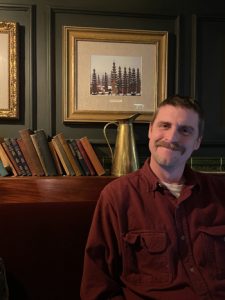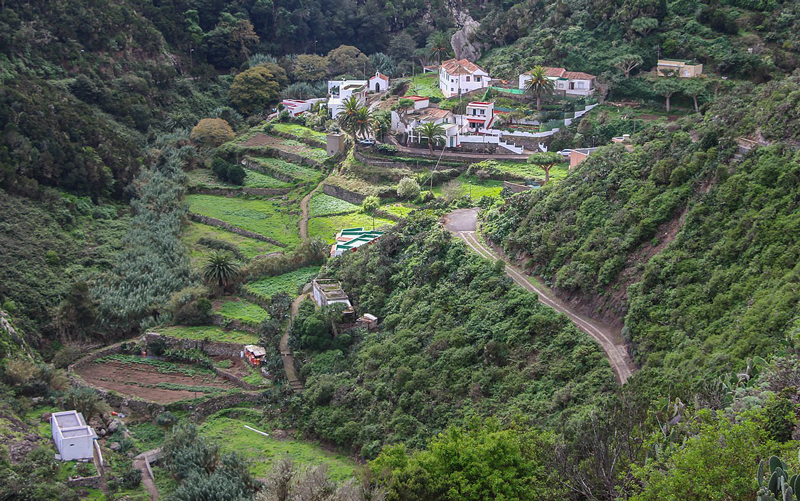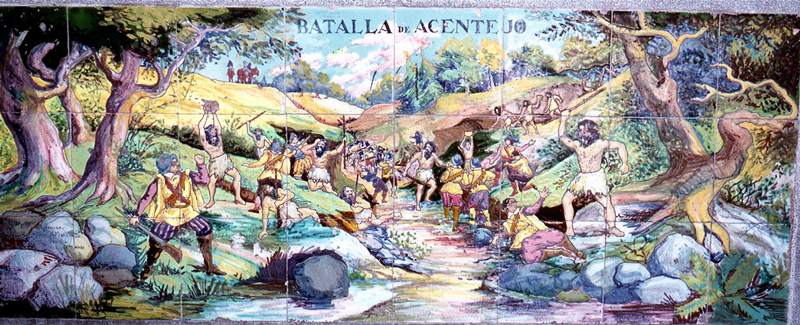The English Dispatch of The Centre for Sustainable Food Systems at UBC Farm
Alex Pomeroy first came to the UBC Farm as a practicum student in 2019, joining the field team in January 2020 as a field coordinator managing alliums, potatoes, cucurbits and legumes and spent one year with the chickens. He recently left the Farm and Canada for London, where his partner is pursuing her Master’s in Music Psychology. In these dispatches, Alex is sharing his impressions on the agricultural landscape in the UK, as he moves from field work to pursuing policy and community work in food.

Alex Pomeroy at an English pub.
Winter Holidaying the English Way
March 2023
As we approached the island, flying along the west coast in preparation for landing, we could already begin to see the covered plantations. Shortly after, while taking the bus into Los Cristianos, we saw what grew under the shade cloths: bananas, 150,000 metric tonnes a year, 90 per cent destined for the Spanish domestic market. Bananas are the leading agricultural product of Tenerife, the largest island of the Canary Islands, an archipelago off the coast of Morocco. The Spanish conquest occurred throughout the 1400s, dubbed as “modern Europe’s first overseas settler colonial genocide”1, with Tenerife finally falling under Spanish control in 1496. The Museum of Nature and Archaeology contains collections of pre-contact artifacts, including mummies, Guanche pottery and the Zanata stone, an inscribed tablet presumably of Guanche origin. However, we found the dominant narrative echoed in the murals and mosaics throughout the capital Santa Cruz: the erasure of pre-conquest histories and the celebration of Spanish settlement. Even the white sand on the beaches around the south of the island was taken from Africa. As a volcanic island, the naturally occurring landscape is of black sand beaches.

A terraced farm in Tenerife, Spain. Photo: Michal Klajban | CC BY-SA 4.0.
The Guanches were believed to be descendants of North African Amazigh peoples (known commonly as Berber), and likely arrived on the archipelago sometime in the first millennium BCE. With the destruction of language being a key component of genocide and colonization, the words and phrases that do remain show strong similarities to Berber languages, especially in regards to agriculture. While they are long gone, evidence of their presence on the land is still visible. High above the island’s capital, accessible by a narrow and windy road, is an area called Anaga Rural Park. There are a few small and barely inhabited villages, often enshrouded in dense clouds that move across the peninsula. Terraced stone gardens line the deep valleys of Chamorga and La Cumbrilla. We often wondered when these stones had been laid. The more I read, the clearer it became that these beautiful terraced farms were most likely built by settlers. This area was very important to the Guanches, as it provided seasonal grazing land for their animals. They held a harvest feast mid-August called Beñesmen, which also marked the new year on their calendar.

Mural in Santa Cruz depicting the Battle of Acentejo, won by the Guanches in spite of their technological inferiority. Photo: Alex Pomeroy.
Exclusionary treatment tragically continues through the application of modern-day EU and Spanish immigration law. Samuel Allan from Statewatch, a non-profit monitoring civil rights issues, argues that policies of inhumane detention, illegal mobility restrictions and a deportation imperative is converting the Canary Islands into “makeshift deportation waiting rooms and a black hole for human rights.”2 Due in part to heightened control of Mediterranean routes, two-thirds of all African migrants now entering Spain attempt to do so through the Canary Islands3. That same report by Statewatch outlines that over 23,000 people made the journey in 2020 (mostly from Morocco, Senegal and Mali) – a tenfold increase from 2019, triggered by the COVID-19 pandemic and ongoing climate crises. The Atlantic route is particularly dangerous, claiming the lives of roughly three out of ten who attempt the crossing. In November 2022, three men survived an 11-day journey from Lagos, Nigeria to Las Palmas, perched on the rudder of a tanker ship. To attempt such a horrific journey, only to be faced with inhumane conditions and eventual deportation signifies severe human rights abuses. The issues around migration are too complex to explore in this briefing, but please do read into some of the resources linked below.
While our time in Tenerife was beautiful, especially the two nights spent in the mountains of Anaga, we left with many questions. I set out to write a piece on the agricultural history and contemporary food system of the island, but found these topics to be lacking in complexity. Instead, I opted to focus on Indigenous land usage, colonial history and the continued impact of this history on the immigration laws in place today. I hope this has been an informative and infuriating read.
Cheers,
Alex Pomeroy
References
- 1. Adhikari, Mohamed (2017). “Europe’s First Settler Colonial Incursion into Africa: The Genocide of Aboriginal Canary Islanders“. African Historical Review.
- 2. Allan, Samuel (2021). “The Canary cage: the making of deportation islands on Spain’s Atlantic border”. StateWatch.
- 3. Pons, Corina (2022). ‘No one can stop them’: African migrants aim for Spain’s Canary Islands. Reuters online.